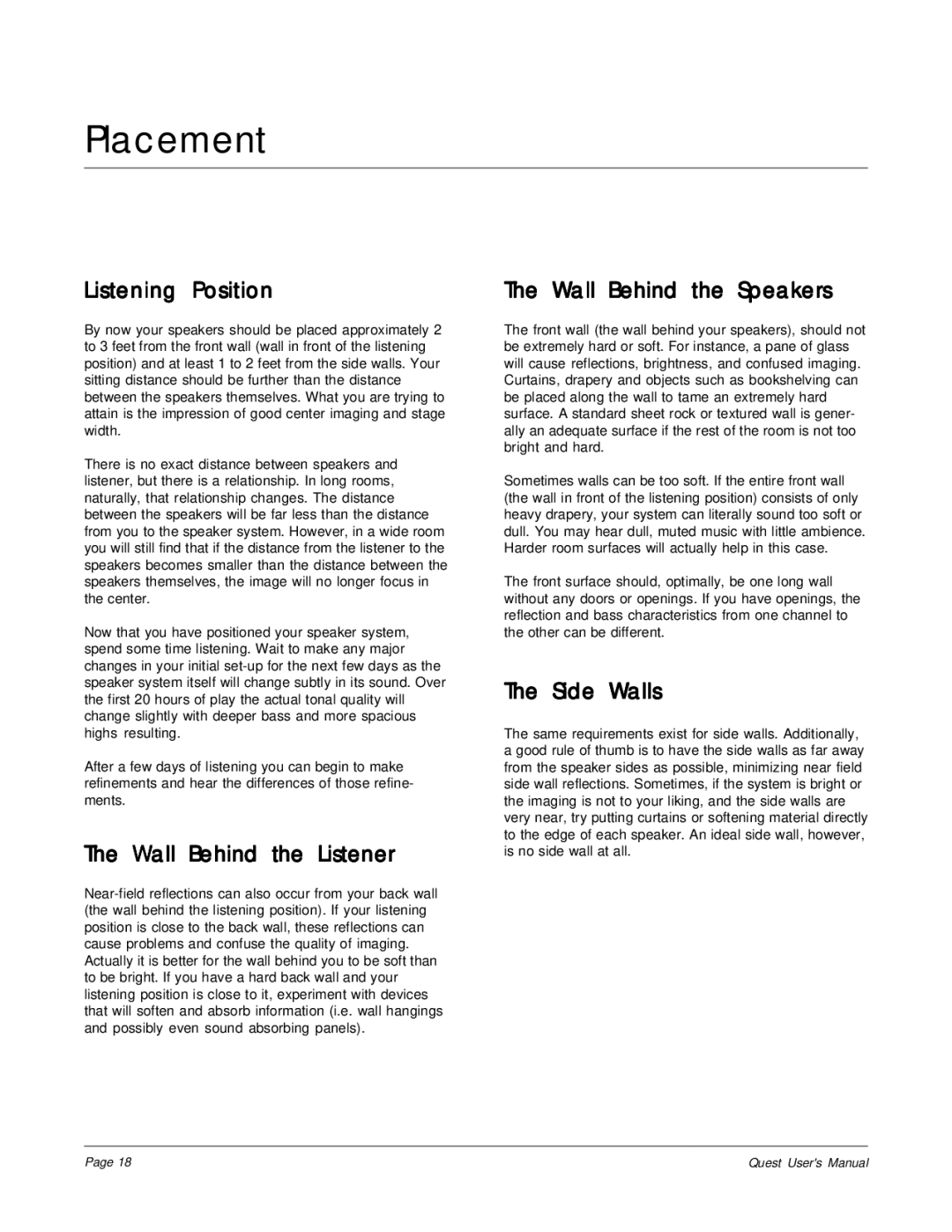
Placement
Listening Position
By now your speakers should be placed approximately 2 to 3 feet from the front wall (wall in front of the listening position) and at least 1 to 2 feet from the side walls. Your sitting distance should be further than the distance between the speakers themselves. What you are trying to attain is the impression of good center imaging and stage width.
There is no exact distance between speakers and listener, but there is a relationship. In long rooms, naturally, that relationship changes. The distance between the speakers will be far less than the distance from you to the speaker system. However, in a wide room you will still find that if the distance from the listener to the speakers becomes smaller than the distance between the speakers themselves, the image will no longer focus in the center.
Now that you have positioned your speaker system, spend some time listening. Wait to make any major changes in your initial
After a few days of listening you can begin to make refinements and hear the differences of those refine- ments.
The Wall Behind the Listener
The Wall Behind the Speakers
The front wall (the wall behind your speakers), should not be extremely hard or soft. For instance, a pane of glass will cause reflections, brightness, and confused imaging. Curtains, drapery and objects such as bookshelving can be placed along the wall to tame an extremely hard surface. A standard sheet rock or textured wall is gener- ally an adequate surface if the rest of the room is not too bright and hard.
Sometimes walls can be too soft. If the entire front wall (the wall in front of the listening position) consists of only heavy drapery, your system can literally sound too soft or dull. You may hear dull, muted music with little ambience. Harder room surfaces will actually help in this case.
The front surface should, optimally, be one long wall without any doors or openings. If you have openings, the reflection and bass characteristics from one channel to the other can be different.
The Side Walls
The same requirements exist for side walls. Additionally, a good rule of thumb is to have the side walls as far away from the speaker sides as possible, minimizing near field side wall reflections. Sometimes, if the system is bright or the imaging is not to your liking, and the side walls are very near, try putting curtains or softening material directly to the edge of each speaker. An ideal side wall, however, is no side wall at all.
Page 18 | Quest User's Manual |
